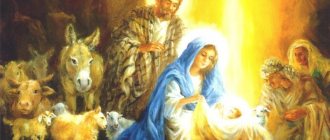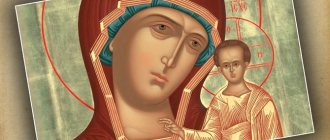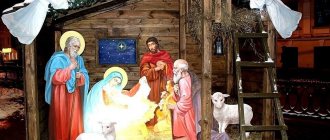If the Orthodox have their main feast on Easter, and traditional sweet dishes are dedicated to this holiday, then in Catholic and Protestant countries all kinds of sweets are made primarily for Christmas. Long before a hearty Christmas dinner or lunch and for some time after it, fancy-shaped confectionery products appear on festively set tables, each of which has its own, sometimes surprising, story.
There are always stellar baked goods on Christmas tables. Unlike the “Kremlin” star, which we used to decorate New Year trees (instead of the popular angels before the revolution), here the shape, of course, refers to the Star of Bethlehem. And since “in fact” that star was a comet, in the Western tradition these products are baked like that – “with a tail.” However, a simple form is also found: German macaroons “cinnamon stars” (“zimtsterne”) even without any tail create a joyful festive mood. Stellar pastries are not uncommon in the Romanesque zone of Europe - here, first of all, Northern Italian Verona comes to mind, where "pandoro", a ribbed cake made from airy yeast dough, must be cut horizontally - so that not only the entire product, but also each piece retains the eight-pointed " star" shape.
Other sweet attributes of Christmas are associated with the mystical symbolism of numbers. Particularly popular are 12 (the number of Christ's apostles) and 13 (the apostles plus Jesus himself). In Provence, in the south of France, after the midnight Christmas mass, exactly thirteen types of dessert are still served: hazelnuts or walnuts, raisins, dried figs, almonds (this “four” symbolizes the four righteous mendicant orders: Augustinians, Dominicans, Franciscans and Carmelites) , diamond-shaped “calisson” marzipans from the city of Aix with candied melon, white and black nougat, quince marmalade “pat”, winter melon, light grapes, tangerines, an ancient sweet cake “pompou” with olive oil, as well as dates stuffed with green and red marzipan. By the way, dark green and bright red are also not random, but very significant colors: they personify eternal life and the sparkling sun.
Another feature of the Western European Christmas celebration is that preparations for it begin long before the end of December. In the old days, in the weeks before Christmas, Catholics observed a strict fast, but over time, relaxations were made, and after the Second Vatican Council (1962–1965), during which, in particular, services were introduced in national languages, the Nativity fast finally “fell out of use.” " Only its name has been preserved - Advent (“advent”, that is, the Coming of the Savior). This is still the name for the pre-holiday period, which begins four Sundays before Christmas. Its indispensable attribute, especially in Northern Europe, is a wreath with 4 candles: on the fourth Sunday before the holiday, one candle is lit on it, on the third, two, and so on, and by December 25, all four candles are already burning on the wreath. In addition, this period includes several saints' days, and very revered ones. And while children play with sweet Advent calendars (a cardboard with windows for each day remaining until Christmas, representing a “stash” with candy, cookies, etc.), adults prepare traditional treats for each of these holidays. This is how a wonderful Christmas mood gradually arises...
Let's celebrate Christmas with dignity: when does Lent begin and end?
If you want to prepare for a gracious union with the Savior, the Nativity Fast will need to be observed from the end of autumn and the beginning of winter. The laity fasts for 40 days: from November 28 to January 7.
As you can see, this fast is akin to the Great Lent, because it also lasts 40 days. That is why in the Church Charter it is usually called the Pentecost. True, it is not as strict as on the eve of Easter. After all, Orthodox Christians are allowed to eat fish and seafood.
There are small exceptions, of course. But we will talk about them a little later. In the meantime, let's talk about why this post is also called Filippovsky. The thing is that the last day before Lent, when you are allowed to have whatever your heart desires on the menu, is called a conspiracy. It falls on November 27 - this is the day of remembrance of the Apostle Philip.
That is why people call this day “Fillipovka” or “Filippka”. The laity eats whatever their heart desires on this day. But the next day, from November 28th, they begin to fast.
Popular articles now
Viktor Pavlik’s young girlfriend canceled her wedding with the artist: “Everything is learned by comparison”
Famous Ukrainian TV presenter “1+1” Nelya Shovkoplyas became infected with covid-19: she named all contact persons
The star of his favorite Soviet films and TV series, Sergei Koltakov, has died
Ukrainian woman with breast size 13 excited the entire beach in a tight swimsuit
show more
Getting ready for Christmas! Misha Romanov
(Article by 13-year-old editor of the site “Family and Faith” - Misha Romanov)
Hello , dear children and parents!
Let's talk to you about how best to prepare for the upcoming holiday - the Nativity of Christ. How to spend the days remaining until Christmas Eve? Well, of course it’s spiritual and useful both for yourself and for those around you. I highly recommend reading an akathist to the Lord or the Virgin Mary every day. And also read more lives of saints.
My parents told me that many priests advise reading daily not only morning and evening prayers, but reading the lives of saints. Previously, I didn’t quite understand why this needed to be done, but now I understand. Every day I try to read more lives of saints about various ascetics and martyrs. And I immediately think about eternity, about the fact that a beautiful, beautiful paradise awaits righteous people! And then the heart becomes joyful and good. I also want to live better.
Also during the holidays, you need to decorate your house with Christmas crafts! It was New Year's Eve recently and you probably still have materials for crafts. You can make Christmas crafts from this material (colored paper, cardboard, stars). These can be snowflakes, Christmas tree balls, holiday drawings, posters, gifts for parents and loved ones, and of course, the main Christmas craft - a nativity scene. The nativity scene is one of the main symbols of the holiday. How to make it? Yes, very easy!
We take any medium-sized box (you can even use a shoe box), put it on its side and cover it with brown paper to make it look like a cave. Next you need to sculpt figurines of the Mother of God, the Child of God, Joseph from plasticine or clay, you can also make shepherds, and sheep with lambs. If you don't know how to sculpt, then you can draw a Christmas picture (or ask your parents to print it out for you) and insert it inside the nativity scene. Then you need to cut thin strips from golden paper and lay them on the bottom of the nativity scene. Get a straw. You can also draw angels on paper or cardboard and cut them out, then hang them on a string inside the nativity scene. Turn out beautiful!
I make Christmas crafts not only to decorate my home, but also to get me in the Christmas mood. After all, when you draw Christmas pictures, angels, winter landscapes with a temple and a Christmas tree, or make a nativity scene, you immediately think about the approaching holiday of the Nativity of Christ!
Now let's talk about Christmas Eve, which comes on January 6th! This is the last day of fasting. Christmas Eve is the eve of the Nativity of Christ, so it must be spent with dignity before the Child God. In general, the pre-celebration of the Nativity of Christ began on January 2 and will continue until January 6 until the Christmas holiday. Therefore, these days you can already feel the Christmas joy!
Christmas Eve is so called from the festive dish “sochivo”. Sochivo, this is such a delicious dish that in Rus' was prepared (and now many are preparing it) on Christmas Eve. It is prepared on the basis of millet or rice (in Rus' it was made only from millet, since rice had not yet been brought from China, and rice does not grow in Rus'). Raisins, nuts and honey are added to the cooked porridge. The result is a tasty and juicy dish that tastes superior to cakes and pastries.
Also on Christmas Eve, one pious and very interesting custom is observed - not eating until the first star. Why do I say interesting, because in the late afternoon we go out and take a walk. We talk about the approaching Christmas of Christ and at the same time look for a star in the sky. By 5 pm the star always appears, and we happily go home to eat a juicy meal!
My parents told me that this pious custom (not eating until the first star) is not established by the Church Charter. That is, it is not entirely mandatory. But, nevertheless, he is very pleasing to the Lord. If we look for the Christmas star with our soul and heart open to Him, mentally transporting ourselves back more than 2000 years ago, we can feel that in Bethlehem, distant and at the same time close to our hearts, Jesus Christ is born from the Most Pure Mother of God. We seem to be transported back in time.
We should be very happy about the Christmas holiday, because Jesus Christ was born in order to give us eternal and immortal life!
I congratulate you all on the upcoming holiday of the Nativity of Christ!!!
bless you!
Preparing for the Nativity of Christ! Misha Romanov









